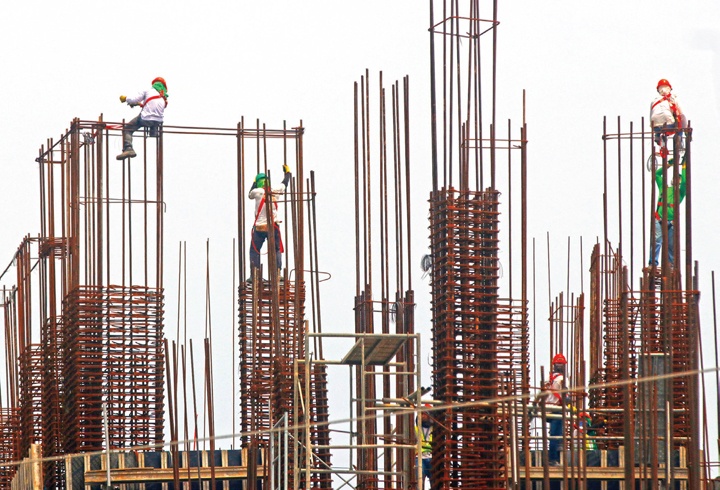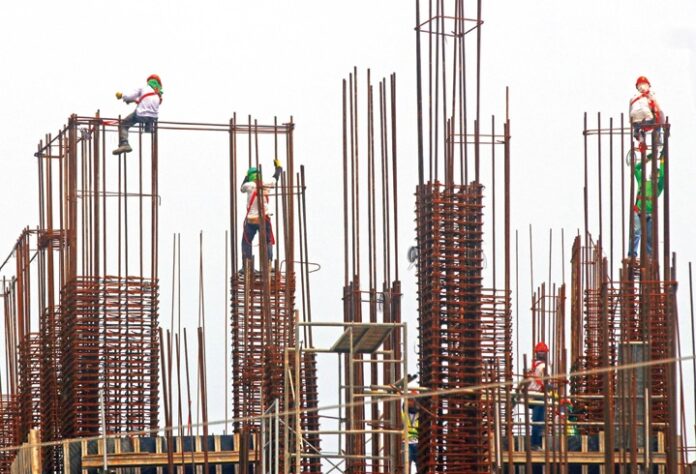
THE resumption of the government’s infrastructure program and rebound in global consumer demand benefited the local manufacturing sector, as factory output more than doubled in April.
On Tuesday, the Philippine Statistics Authority (PSA) disclosed that the Volume of Production Index (VoPI) surged 162.1 percent in April 2021. Last year, the VoPI contracted 64.8 percent.
Industries that posted triple-digit increases were led by manufacture of basic metals at 687.5 percent; fabricated metal products, except machinery and equipment, 610.1 percent; furniture, 577.4 percent; wearing apparel, 555.5 percent; and transportation, 436.7 percent.
“The opening of the economy late last year and continuing up to the present means positive growth for manufacturing, which, I understand, went down by almost half or even less than half at the height of the lockdowns in 2020,” economist Rene E. Ofreneo, former dean of the University of the Philippines School of Labor and Industrial Relations (Solair), told the BusinessMirror in an e-mail.
Ofreneo said the reopening of the economy led to the rebound in industries that are related to construction such as basic metals and fabricated metal products.
He added that the reopening also led to a rebound in transport, which explained the rebound in the manufacture of transport equipment.
The global recovery also led to an increase in the manufacture of electronics. Based on the data, the manufacture of electrical equipment increased 246.9 percent.
Ofreneo said this rebound was linked to the value-chain production of firms that are located in the country’s economic zones.
“There is also a rebound in consumption, that’s why there’s a rebound in garments, textiles, media, footwear, etc.,” Ofreneo added.
The PSA data showed the printing and reproduction of recorded media saw a growth of 429.9 percent while the manufacture of textiles grew 329.9 percent.
In the view of De La Salle University economist Maria Ella Oplas, the data on manufacturing performance is mainly due to base effects.
Nonetheless, Oplas said, this is good news for the economy and also points to the recovery of the government’s Build, Build, Build program.
“2020 vs 2021 means the output last year was really low. That’s what you call base effect. So that means during the pandemic period we have improved from previous year but not necessarily that we have achieved the pre-pandemic period of production,” Oplas told BusinessMirror.
Container crisis
As for other economists such as Ramon L. Clarete, former dean of the UP School of Economics, the surge in the VoPI was more of a “statistical artifact.”
University of Asia and the Pacific economist Victor A. Abola told this newspaper in an e-mail that many of those sectors that recorded “extraordinary year on year growth” practically had zero to minimal operations due to the strict lockdown in April 2020.
Clarete said, nonetheless, that the growth is driven by the increase in demand globally and domestically for certain products. However, this improvement may still be affected by the ongoing container crisis.
The BusinessMirror earlier reported that the lack of available containers has caused shipment delays of two weeks to one month, affecting the revenues of the exporters.
In its latest report, the United Nations Conference on Trade and Development (Unctad) said the crisis pertained to the delays in the maritime supply chain due to constraints amid the pandemic.
These include shortage in port labor, port congestion and capacity constraints in trucks, among others—all of which prolong the container dwell times.
“They [manufacturing performance] will be affected by logistical constraints and shortages or delays of materials due to logistical constraints. Call it recovery pains. But eventually they will be overcome,” Clarete told the BusinessMirror.
Sustaining recovery
In order to sustain this recovery, Ateneo de Manila University John Gokongwei School of Management Dean Luis Dumlao thinks that, given the performance of the manufacturing sector, it will take more than a 500-percent increase in factory output to go back to prepandemic levels.
“These are results of level effects. Because of the lockdown, value and volume declined by roughly 85 percent. Going back to pre-pandemic value and volume entails more than a 500-percent increase. E.g. 100 to 15 translates to 85-percent decline, and 15 to 100 translates to 567-percent increase,” Dumlao said.
He said the global recovery will start with the Group of Seven (G7) which consists of Canada, France, Germany, Italy, Japan, the United Kingdom and the United States.
Dumlao expects this recovery in rich nations to spill over to the Philippines through increased export earnings and import receipts. This may, however, lead to wider trade deficits.
However, these trade deficits will be offset by overseas Filipino worker (OFW) remittances. Once recovery is under way in rich nations, more Filipinos can go abroad to start working again.
Manufacturing data
Based on PSA data, the Value of Production Index (VaPI) for manufacturing rebounded in April 2021 as it posted an annual increase of 154.3 percent, from a 74.2-percent contraction in March.
The year-on-year growth rate in April 2021 was the first positive growth since April 2019 and the highest annual increase in the 2018-based data series. In April 2020, VaPI dropped at an annual rate of 66.6 percent.
The increment in VaPI was brought about by the positive growth rates of 20 industry divisions, 14 of which posted triple-digit annual growth rates with manufacture of basic metals as the highest at 729.1 percent.
On the other hand, the remaining two industry divisions—manufacture of coke and refined petroleum products; and manufacture of basic pharmaceutical products and pharmaceutical preparations—recorded double-digit declines of 24.5 percent and 19.4 percent, respectively.
Data also showed that the average capacity utilization rate for the manufacturing sector increased in April.
Based on responding establishments, the average capacity utilization rate for the manufacturing sector in April 2021 rose to 63.6 percent from 63 percent in the previous month.
A total of 18 of the 22 industry divisions had at least 50 percent average capacity utilization rate. This was led by the manufacture of furniture which posted an average capacity utilization of 81.3 percent.
This was followed by the manufacture of other non-metallic mineral products, which posted an average capacity utilization rate of 80.9 percent and manufacture of electrical equipment at 75.2 percent.
Read full article on BusinessMirror

